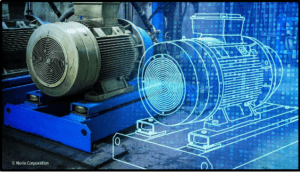What is a Digital Twin?
A digital twin refers to a virtual model of a process, product, or service. It is a bridge between the physical and digital worlds. This pairing of the virtual and physical worlds allows analysis of data and monitoring of systems to identify problems before they even occur, prevent downtime, develop new opportunities and even plan for the future by using simulation.
The digital twin was first introduced and clearly defined by Dr. Michael Grieves in 2003 at the of Michigan. The Internet of Things acts as a foundation for digital twin technology.
Data – Pillar of Digital Twin Technology
Gaining access to these data across industries is a complicated process. This hurdle can be solved if organizations properly manage their data. A holistic approach to and manage data should be followed. The base or start of a digital twin is mining data. The mining of data from the system is done to monitor performance.
Primary Application Areas:
Industries IoT, Predictive Maintenance, Manufacturing, Space Research, Automobile, Wind turbines
Benefits of enabling Digital Twin Technology:
Innovatory product design, tracking of product, detailed information on the product
Types of Aspentech Digital Twin Models:
- Plant Digital Twin
Process models: Rigorous process simulation models provide an accurate representation of chemical processes. Rigorous first principles models are always more accurate when they and are known and the model calibrated against the plant operation. Machine learning and deep AI have key roles to play for complex processes as operations change unit behavior. Emerging AspenTech hybrid models employ the best of both methods, applying both (first principles and AI), further improving fidelity. Dynamic what-if models are crucial operational tools to ensure both process safety and effective operator training to minimize human error. Additionally, advanced data analytics form the basis of empirical process unit models, using multivariate analysis that can simulate and optimize chemical process quality assets. Asset models represent the functional elements of an asset, the physical instances, and the connectivity in terms of process flows, physical connections, and associated infrastructure. In addition to 3D physical models (provided through integration with Hexagon PPM), asset data includes operating procedures such as data sheets and recipes; logical connectivity, such as process flow diagrams (PFD) and piping and instrumentation diagrams (P&IDs).
- Operational Digital Twin
Planning and Scheduling: Planning and scheduling models are extremely powerful drivers of value in refining, bulk chemicals, specialty chemicals, metals and mining, and related businesses, planning digital twins can evaluate many scenarios rapidly and optimize across the supply chain network of assets and/or for specific sites.
- Operational Integrity Digital Twin
Asset Condition: Data streams from physical and process data feed, with associated machine-learning prescriptive maintenance tools, provide an asset condition digital twin, forecasting process, equipment, and environmental anomalies and diagnosing the reasons and preventative measures available. AI is employed to process the massive streams of data required to make these models feasible. Some integrate with planning and scheduling to identify operating adjustments to minimize impacts of equipment repair and/or failure.
Please click here to explore our Engineering and IIoT services.




